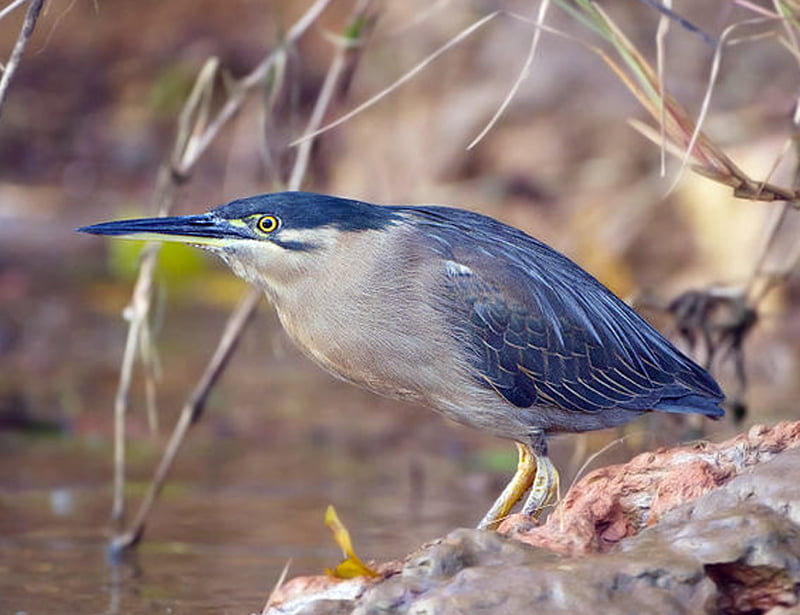Butorides striatus is characterized by a dark gray color with yellow irises, black beak, greenish yellow legs. In adult birds it has a long, dangling crown and long crest of a shiny greenish black color. There is a black line from the base of the beak to the bottom of the eyes and cheeks. The wings and tail are blackish blue, with shiny greenish feathers, with dark yellow edges. The stomach is pinkish gray and the chin is white. Female birds are slightly smaller than males. Juvenile birds are brown patterned with white spots.
Description
Population Size
Unknown
Life Span
-
WEIGHT
-
LENGTH
45 cm
Ca
Carnivore
Di
Diurnal
So
Solitary
Classification
KINGDOM
:
Animalia
PHYLUM
:
Chordata
CLASS
:
Aves
ORDER
:
Pelecaniformes
FAMILY
:
Ardeidae
GENUS
:
Butorides
SPECIES
:
Butorides striatus


